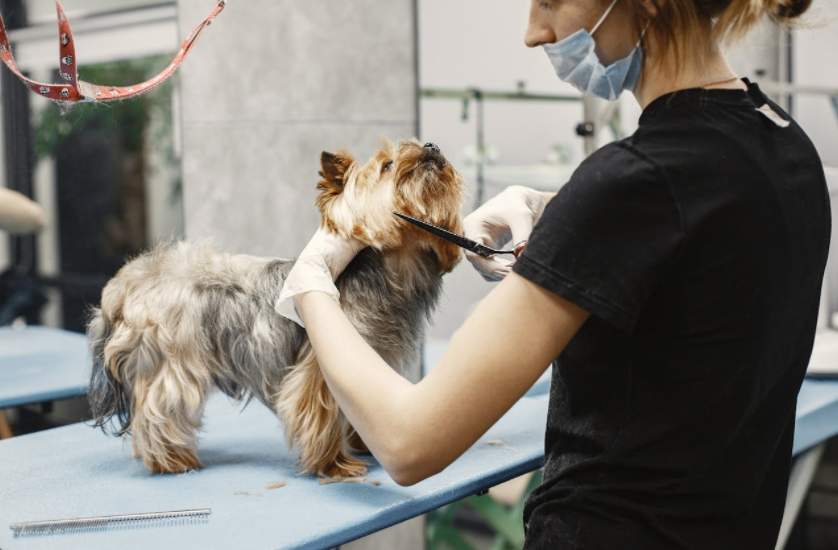Top Reasons Entrepreneurs Choose Pet Industry Franchises
Starting a pet industry franchise offers clear paths to build a trusted business with proven methods and dedicated support. Simple training programs cover key tasks from service delivery to inventory management. Reliable systems for ordering supplies and tracking performance remove guesswork. Established brand recognition helps draw customers without heavy marketing budgets. Ongoing field guidance and digital tools sustain progress and maintain quality. Budget planning is made easier with readily available financing alternatives and clear expense breakdowns. Participating in a peer network creates chances for ideas to be exchanged and for group development. This strategy turns aspiration into a viable, profitable endeavor.
Consistent Support Systems
Comprehensive support systems help new operators master daily tasks and maintain brand standards. Initial training sessions cover store layout, product selection, and grooming techniques through hands‑on workshops and clear videos. Dedicated field consultants provide on‑site coaching to reinforce key practices and answer questions promptly. Online portals provide detailed instructions for scheduling employees, buying merchandise and communicating with customers. Frequent webinars keep offers interesting and new by introducing seasonal specials and improved services. Centralized help desks resolve technical issues related to booking software or payment processing without delay. Performance reviews use simple metrics to highlight successes and areas for improvement. This structure enables steady progress and builds operator confidence with each milestone reached.
Proven Business Models
Franchise formats rely on tested business models that outline every critical operation in simple terms. Detailed manuals explain customer reception, service timing, and product restocking processes in clear language. Financial templates show standard income streams and expense groups, which enable entrepreneurs to establish realistic aims. Site selection criteria identify locations with high foot traffic or strong pet ownership demographics. Facility designs balance retail space, grooming stations, and waiting areas for efficient workflows and comfortable experiences. Standardized procedures for health and safety maintain a clean environment that reassures customers. Regular audits confirm adherence to quality benchmarks and support consistent brand delivery. This framework removes uncertainty and lets operators focus on daily excellence and steady growth.
Strong Market Demand
Pet ownership trends continue to rise as households view animals as valued family members. Growing demand for retail products and grooming services creates reliable customer bases in most communities. High end food brands, toys and accessories draw customers back and provide chances for cross-selling. Trained stylists’ grooming packages promote recurrent service subscriptions, which increase recurring income. Periodically seasonal demands like flea treatments and Christmas gift packages lead to sales surges. Demographic information ensures proper product combinations and helps customize products for local preferences. Clients’ direct input about service preferences and product recommendations is gathered via straightforward surveys. This customer‑driven approach keeps franchises aligned with market needs and strengthens long‑term prospects.
See also: Why ABA Billing Services Are Essential for Patient Satisfaction and Financial Health
Efficient Supply Chains and Inventory
Under a pet store franchise, model relationships with recognized suppliers ensure prompt delivery of high quality products at fixed costs. To save costs and streamline logistics orders are basically combined across locations under centralized purchasing agreements. Automated reordering systems keep track of stock levels, guaranteeing prompt refilling before products run out. To help with planning, clear product catalogs include supplier lead times, price and descriptions. Quality control checks confirm each shipment meets established standards for safety and freshness. Seasonal inventory adjustments introduce limited‑edition items that spark customer interest without overstocking risks. Simple reporting tools summarize sales data for top sellers and slow movers, guiding future orders. This setup frees operators to focus on customer service rather than supply management.
Community Engagement and Growth
Active community engagement builds loyal relationships and supports steady expansion. Adoption days that highlight services and promote goodwill are organized by local outreach organizations in collaboration with shelters. Brand awareness among pet owning households is increased by taking part in school fairs or charitable activities. Repeat business is rewarded via loyalty programs with points that may be used for free merchandise or reduced grooming services. Social media platforms promote consumer experiences and provide pet care advice resulting in organic recommendations. Retail displays feature local animal artists or handcrafted goods, strengthening neighborhood bonds. Continuing education workshops teach basic pet first aid or nutrition insights, positioning the franchise as a trusted resource. This community‑centered focus helps franchises grow sustainably and deepen customer trust.
Conclusion
Pet industry franchises combine structured support, proven models, and rising market demand into a compelling opportunity. Reliable supply chains and engaging local outreach reinforce brand strength. Transparent financial plans and ongoing training simplify operations. The long-term relationship with the customer is facilitated by community partnerships and rewards of loyalty. This comprehensive process enables the entrepreneur to create successful and confident pet businesses.






